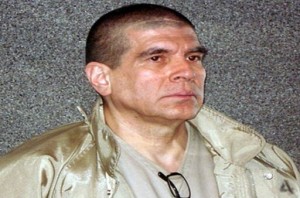 FX’s The Bridge is my favorite new crime drama of the year. And while the story about a serial killer is compelling, the real strength of the show is the character development and conflict along the border between El Paso and Juárez.
FX’s The Bridge is my favorite new crime drama of the year. And while the story about a serial killer is compelling, the real strength of the show is the character development and conflict along the border between El Paso and Juárez.
The lead characters, Marco Ruiz, played by Mexican actor Demian Bechir, (nominated for an Oscar for his role in A Better Life) and Sonya Cross, played by German actress Diane Kruger (from Quentin Tarantino’s Inglourious Basterds) are terrific in their roles, as is the supporting cast.
Kruger brings empathy, humor and tenacity to her role of a determined homicide detective with Asperger’s syndrome, an autism disorder that gives her a high intellect but a serious lack of empathy. Bechir’s depiction of a weary but honest cop beset by personal problems and a Mexican police force riddled with corruption, displays strength of character and a determination to rise above it all.
From the first episode in which a female corpse is revealed to be two dismembered halves, one American, one Mexican, deliberately placed across an international line on the “bridge” between the U.S. and Mexico, the series creates a mood missing from most television dramas. With its realistic settings, beginning with the opening credits, the series rises way above what passes for entertainment on the small and large screen today. The series even trusts that an intelligent audience can read Mexican scenes in subtitled Spanish.
As cable dramas retreat more and more into the realm of fantasy and horror, it’s exciting to discover a series that manages to be both tough and entertaining. By choosing the location along the Mexican and U.S. border, the writers should have plenty of stories to tell in the coming seasons. I certainly hope so.
You can catch all the previous episodes––minus most of the commercials––on The Bridge website at http://www.fxnetworks.com/thebridge.


